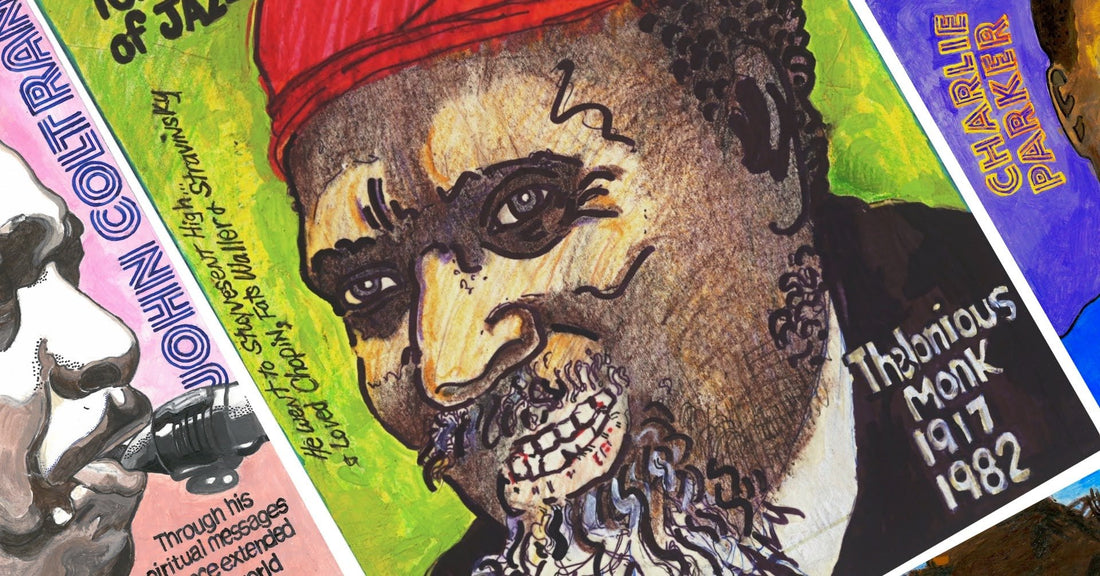
Thelonious Monk: Where Silence Meets Sound
Share
Thelonious Monk: Where Silence Meets Sound
Thelonious Sphere Monk, born on October 10, 1917, in Rocky Mount, North Carolina, grew up in the vibrant cultural landscape of Harlem, New York. His early life was steeped in music; he learned piano by ear as a child and quickly revealed a gift for turning tradition on its head. Unlike many of his peers, Monk never sought to imitate—he sought to redefine.
What made Monk unique was his unorthodox approach to both rhythm and harmony. He struck the piano with a percussive touch, allowing dissonance to breathe, making "wrong" notes feel inevitable. His compositions—like Round Midnight, Straight, No Chaser, and Blue Monk—were puzzles wrapped in blues, balancing jagged edges with soulful warmth.
Monk was a cornerstone of the bebop revolution in the 1940s, yet he stood apart even from its pioneers. While Charlie Parker and Dizzy Gillespie pushed speed and complexity, Monk focused on space, silence, and surprise. His use of unexpected pauses, angular melodies, and off-kilter chords challenged musicians and audiences alike.
His path was not without tribulations. Monk faced harsh criticism early in his career, often labeled as eccentric or even incompetent by those who misunderstood his genius. He also struggled with severe mental health challenges, including long periods of depression and withdrawal. For years, he lost his cabaret card—a license required to perform in New York clubs—leaving him largely unable to work in the city that defined jazz.
Yet Monk persevered. With the support of friends like the Baroness Pannonica de Koenigswarter, he found refuge and stability during some of his hardest times. In the late 1950s and early 1960s, his music finally gained the recognition it deserved. Albums like Monk’s Dream and Brilliant Corners cemented him as one of jazz’s great architects. In 1964, he graced the cover of Time magazine—one of the few jazz musicians ever to do so.
Monk’s style was as striking visually as it was musically. On stage, he would often stand up mid-performance, dance briefly, and return to the keys, as if the music demanded movement. He wore sharp suits, unusual hats, and carried an enigmatic aura—half mystic, half mischief.
By the late 1970s, Monk withdrew from public life almost entirely, living quietly until his passing on February 17, 1982. Though his career was relatively brief, his impact was seismic. Today, Monk’s compositions are among the most performed and studied in jazz history. His fearless individuality paved the way for generations of musicians to embrace their quirks and reject the pressure to conform.
Thelonious Monk was more than a pianist—he was a philosopher of sound. He taught the world that dissonance can be beautiful, that silence is as vital as sound, and that the boldest path is often the one only you can see.
